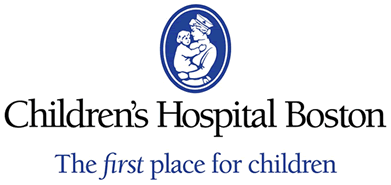The Effect of Hormonal Add-Back Therapy in Adolescents Treated With a GnRH Agonist for Endometriosis: A Randomized Trial
| Status: | Completed |
|---|---|
| Conditions: | Women's Studies, Endometriosis |
| Therapuetic Areas: | Other, Reproductive |
| Healthy: | No |
| Age Range: | 13 - 22 |
| Updated: | 2/7/2015 |
| Start Date: | August 2007 |
| End Date: | December 2013 |
| Contact: | Amy D DiVasta, MD, MMSc |
| Email: | amy.divasta@childrens.harvard.edu |
| Phone: | 617-355-3792 |
The purpose of this study is to determine whether a regimen of norethindrone acetate +
placebo or norethindrone acetate + conjugated estrogens is superior in maintaining skeletal
health and quality of life in adolescents treated with a GnRH agonist for endometriosis.
placebo or norethindrone acetate + conjugated estrogens is superior in maintaining skeletal
health and quality of life in adolescents treated with a GnRH agonist for endometriosis.
Endometriosis has become increasingly recognized as a chronic illness which begins during
adolescence. Untreated endometriosis may lead to chronic pain and infertility. As
recognition of the need for prompt therapy increases, so does the length of time patients
will be exposed to treatments. As a result, there exists a pressing need to evaluate
adjunctive measures that may limit the associated negative health consequences of treatment.
A gonadotropin-releasing hormone (GnRH) agonist is one medication utilized for patients who
have failed other treatments. While GnRH-agonists are effective in relieving symptoms,
their long-term use is problematic. GnRH agonists induce a low-estrogen state, causing
deleterious effects on bone mineralization. These negative consequences are especially
important for our pediatric patients. Adolescence is the critical period in a woman's life
for bone acquisition and attainment of peak bone mass. Anything that interferes with this
process puts patients at risk for lifelong low bone density and future fracture.
"Add-back" therapy appears to be a promising adjunct to treatment for prevention of this
bone loss. Daily therapy with low-doses of hormones preserves bone density in adult
patients, without altering the efficacy of the GnRH-agonist. However, no data exist on the
effect of add-back therapy in adolescents.
The aim of the current study is to evaluate the safety and efficacy of two add-back
regimens, norethindrone acetate + placebo or norethindrone acetate + conjugated estrogens,
for the preservation of skeletal health and quality of life in adolescents with
endometriosis treated with a GnRH-agonist.
adolescence. Untreated endometriosis may lead to chronic pain and infertility. As
recognition of the need for prompt therapy increases, so does the length of time patients
will be exposed to treatments. As a result, there exists a pressing need to evaluate
adjunctive measures that may limit the associated negative health consequences of treatment.
A gonadotropin-releasing hormone (GnRH) agonist is one medication utilized for patients who
have failed other treatments. While GnRH-agonists are effective in relieving symptoms,
their long-term use is problematic. GnRH agonists induce a low-estrogen state, causing
deleterious effects on bone mineralization. These negative consequences are especially
important for our pediatric patients. Adolescence is the critical period in a woman's life
for bone acquisition and attainment of peak bone mass. Anything that interferes with this
process puts patients at risk for lifelong low bone density and future fracture.
"Add-back" therapy appears to be a promising adjunct to treatment for prevention of this
bone loss. Daily therapy with low-doses of hormones preserves bone density in adult
patients, without altering the efficacy of the GnRH-agonist. However, no data exist on the
effect of add-back therapy in adolescents.
The aim of the current study is to evaluate the safety and efficacy of two add-back
regimens, norethindrone acetate + placebo or norethindrone acetate + conjugated estrogens,
for the preservation of skeletal health and quality of life in adolescents with
endometriosis treated with a GnRH-agonist.
Inclusion Criteria:
- Age 13-22 years, at least two years post-menarche
- Body mass index (BMI, kg/m2) between 18 -30 kg/m2
- Surgical diagnosis of endometriosis
- Clinical decision to treat with a GnRH agonist, leuprolide depot (Lupron Depot®; TAP
Pharmaceuticals, Inc.) 11.25 mg IM every 3 months
Exclusion Criteria:
- Concomitant chronic diseases which affect bone health, such as cystic fibrosis,
inflammatory bowel disease, renal disease, or diabetes mellitus
- Markedly impaired liver function or liver failure
- Personal history of thromboembolic event (such as deep venous thrombosis)
- Medication use known to affect bone metabolism:
- Glucocorticoid therapy (including inhaled steroids) or anticonvulsants used in
the last 6 months
We found this trial at
1
site
Children's Hospital - Boston Boston Children's Hospital is a 395-bed comprehensive center for pediatric health...
Click here to add this to my saved trials
